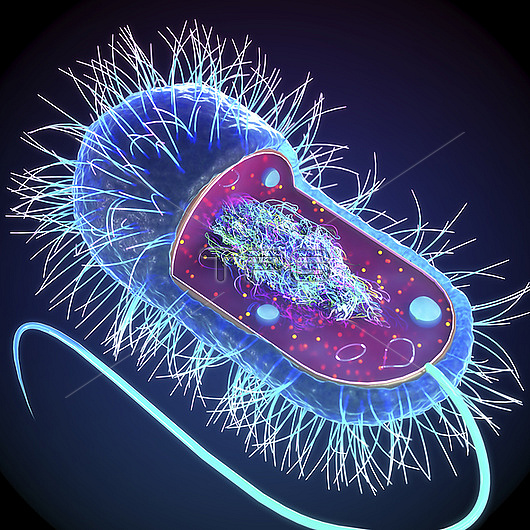
Inner structure of a typical bacterial cell, illustration. Bacterial cells do not have a membrane-bound nucleus or organelles. In the cell's cytoplasm is the bacterial chromosome (multi-coloured strands, centre), which contains the cell's genetic information in the form of deoxyribonucleic acid (DNA). There are also small DNA plasmids (grey rings). These often carry beneficial genes, such as those for antibiotic resistance, and can be exchanged between bacteria in a process known as conjugation. In the ribosomes (dots), protein synthesis takes place. A typical bacterium is covered by an external capsule, and has a rigid cell wall, as well as an inner plasma membrane. Some, but not all, bacteria also have appendages/tails called flagella (light blue, bottom) that rotate and facilitate locomotion. Small hair-like structures called pili (light blue/white) are also found on the bacterial surface, and are used for cell attachment.
| px | px | dpi | = | cm | x | cm | = | MB |
Details
Creative#:
TPG32640960
Source:
達志影像
Authorization Type:
RF
Release Information:
須由TPG 完整授權
Model Release:
N/A
Property Release:
N/A
Right to Privacy:
No
Same folder images:

 Loading
Loading